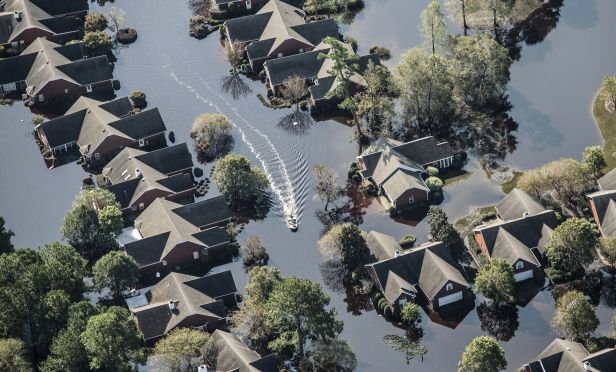 A boat makes it way past flooded property after Hurricane Florence past through Wallace, in North Carolina, U.S., on Friday, Sept. 21, 2018. (Photographer: Alex Wroblewski/Bloomberg)
A boat makes it way past flooded property after Hurricane Florence past through Wallace, in North Carolina, U.S., on Friday, Sept. 21, 2018. (Photographer: Alex Wroblewski/Bloomberg)
Florida Congressman Charlie Crist (D-St. Petersburg) introduced legislation designed to drive down flood insurance premiums by creating a low-interest loan program to help property owners better flood-proof their homes and businesses, protecting property and ultimately reducing post-disaster claims and recovery costs.
The State Flood Mitigation Revolving Fund Act of 2019 has the support of Pew Charitable Trusts, Natural Resources Defense Council, Association of State Floodplain Managers, Property Casualty Insurance Association of America, Consumer Mortgage Coalition, The Nature Conservancy, Union of Concerned Scientists and others.
Recommended For You
Want to continue reading?
Become a Free PropertyCasualty360 Digital Reader
Your access to unlimited PropertyCasualty360 content isn’t changing.
Once you are an ALM digital member, you’ll receive:
- Breaking insurance news and analysis, on-site and via our newsletters and custom alerts
- Weekly Insurance Speak podcast featuring exclusive interviews with industry leaders
- Educational webcasts, white papers, and ebooks from industry thought leaders
- Critical converage of the employee benefits and financial advisory markets on our other ALM sites, BenefitsPRO and ThinkAdvisor
Already have an account? Sign In Now
© 2025 ALM Global, LLC, All Rights Reserved. Request academic re-use from www.copyright.com. All other uses, submit a request to [email protected]. For more information visit Asset & Logo Licensing.








